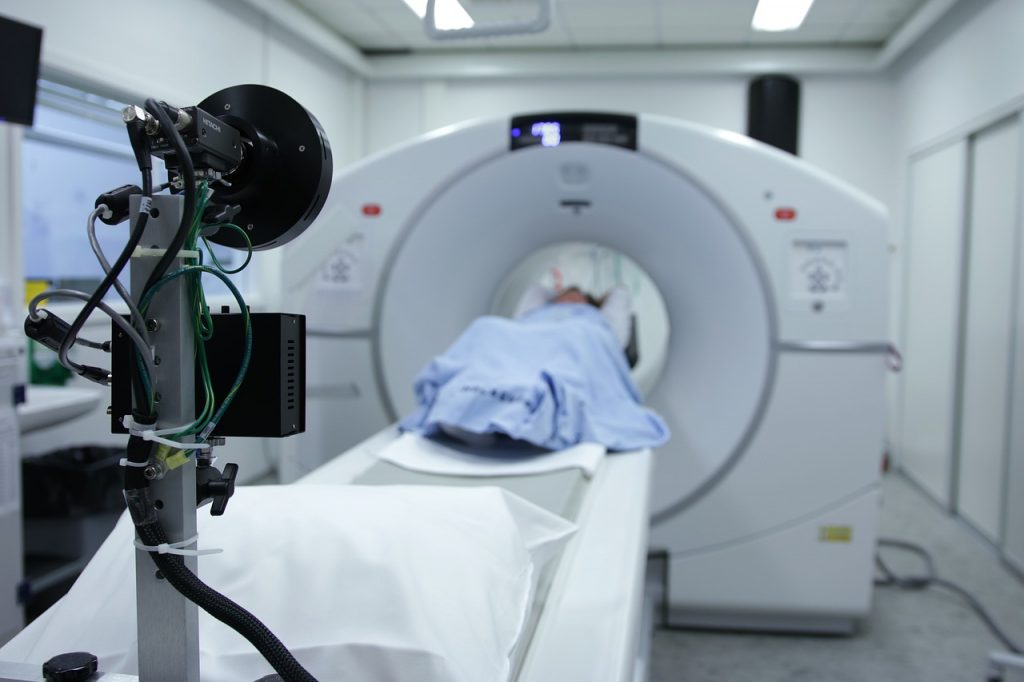Radiologists are professionals that use MRIs, X-rays, and other medical visuals to diagnose injuries or illnesses.
This profession is quite rewarding but requires a good educational background.
In the following article, we will talk about the work of a radiologist including details about qualifications, requirements, salary, working hours and more.
Article Table of Contents
What Does a Radiologist Do
Radiologists are physicians trained to diagnose injuries and illnesses using medical images.
They are usually employed at clinics, hospitals, outpatient hospitals, etc.
For the treatment of patients, they use MRIs, X-rays, and other medical images.
Some professionals can be involved in a particular sphere of medicine, for example, pediatrics.
Radiologists should attend medical school for a minimum of four years and completed four years of residency.
On a daily basis, they deal with interpreting image results, discussing them with other physicians, and helping provide treatments.
The median salary of a radiologist is approximately $490,399 per year.
Their shifts can be irregular and long.
Working hours often include weekends and nights, but the schedule is determined by the type of facility where they work.
Unlike other doctors, radiologists don’t have to interact with patients as much.
Job Responsibilities
- Manage technologists and equipment taking CT scans, X-rays, MRIs, etc., from patients.
- Determine the patient’s condition by the use of medical images and diagnostic tools.
- Advise the follow-up actions as needed, suggesting treatment or additional imaging procedures.
- Communicate patient results with other physicians to prepare a treatment method.
- Conduct radiation techniques for patients’ treatment (e.g., in oncology).
- Keep records of medical information and history of patients.
Fundamental Skills
Interpersonal:
Radiologists often communicate with other physicians and sometimes with patients.
Cooperation and strong communication skills are important for this job.
Analytical:
Radiologists should be able to clearly and correctly interpret the test results.
Then, they should align this data with other patient’s information to receive a comprehensive understanding of their condition.
Detail-oriented:
Since radiologists are expected to interpret results precisely, they should be extremely detail-oriented.
Organizational:
Radiologists work with a lot of lab results and patient records in a quickly changing and stressful environment.
They need to have good organizational skills and the ability to set priorities.
Problem-solving:
Radiologists need leadership qualities and problem-solving skills.
They should be able to make efficient decisions quickly and ensuring they are best for patients and discuss them with other physicians.
Stamina:
The work hours of radiologists are long, so they should be able to work and stand for a long time.
How to Become a Radiologist
It is not easy to become a radiologist.
The field is highly competitive, so the students need great references and high grades.
To be accepted into a radiology residency, they also need some experience or exposure in the field.
The required training for the job takes a while, but those who are committed to success will find it worthy.
Training and Qualifications
It can take up to 10 years after college to become a licensed radiologist.
First off, you need to earn a bachelor’s degree at a four-year university and complete premedical coursework.
After, students should enroll in medical school, which can be highly competitive.
The medical school also takes four years with various clinical rotations and classwork.
After the med school, aspiring radiologists should also finish four years of residency at a hospital.
This time includes a year of internship in clinics, and afterward, students move to radiology.
They work and learn under the supervision of a licensed attending physician.
After residency, radiologists can take a fellowship for one or two years to practice in a particular area of radiology, for example, interventional or pediatric.
After completing all the required training, radiologists must obtain a license by passing a state exam.
Then, they can apply for full-time entry-level jobs.
Experience
To qualify for a licensing exam, radiologists need four-years of completed residency.
For specialization in a particular area, they can also complete a fellowship after residency.
Both during residency and fellowship, radiologists are paid, and this is considered to be the only type of experience needed for entry-level jobs.
The graduates of these programs can work as physicians full-time.
Work Hours
According to practicing radiologists, their job is fulfilling and satisfying, but it can be quite stressful and poorly flexible.
Their typical work week includes 50 hours per week.
The shifts of radiologists are long and irregular and can fall for weekends, holidays, and nights.
This applies the most to those who work in academic settings and hospitals.
Radiologists at outpatient hospitals can have more regular shifts as they typically work during business hours.
Career Outlook and Opportunities
Radiologists are specialist doctors.
Their median salary is about $490,399.
The prospects of the job are positive.
The employment rate is expected to grow by 14% by 2024.
In 2012, CNN reported radiology to be one of the best jobs in the States.
Radiologists invest a lot of time and effort in their job, but they receive decent compensation.
While advancing in their careers, radiologists can choose less stressful and unpredictable schedules while still being well-paid.
The growth opportunities of radiologists usually imply staying up-to-date on modern procedures which can increase their income.
They can also take leading roles in the field and even go to academia and become teachers.
Others can take on research-related jobs or develop public health programs.
Conclusion
The job of the radiologist can be stressful, but it is highly rewarded both financially and from helping people find solutions to their health conditions.
If you dream of a medical career with good compensation and minimal interaction with patients, radiology is a suitable field.
If you plan to become a radiologist, it’s recommended to start planning early.
Ambitious, hard-working, and driven people can greatly succeed in the area.
After 10 years of learning and preparation, trainees in this area are secured for a fast-paced and well-paid career.

